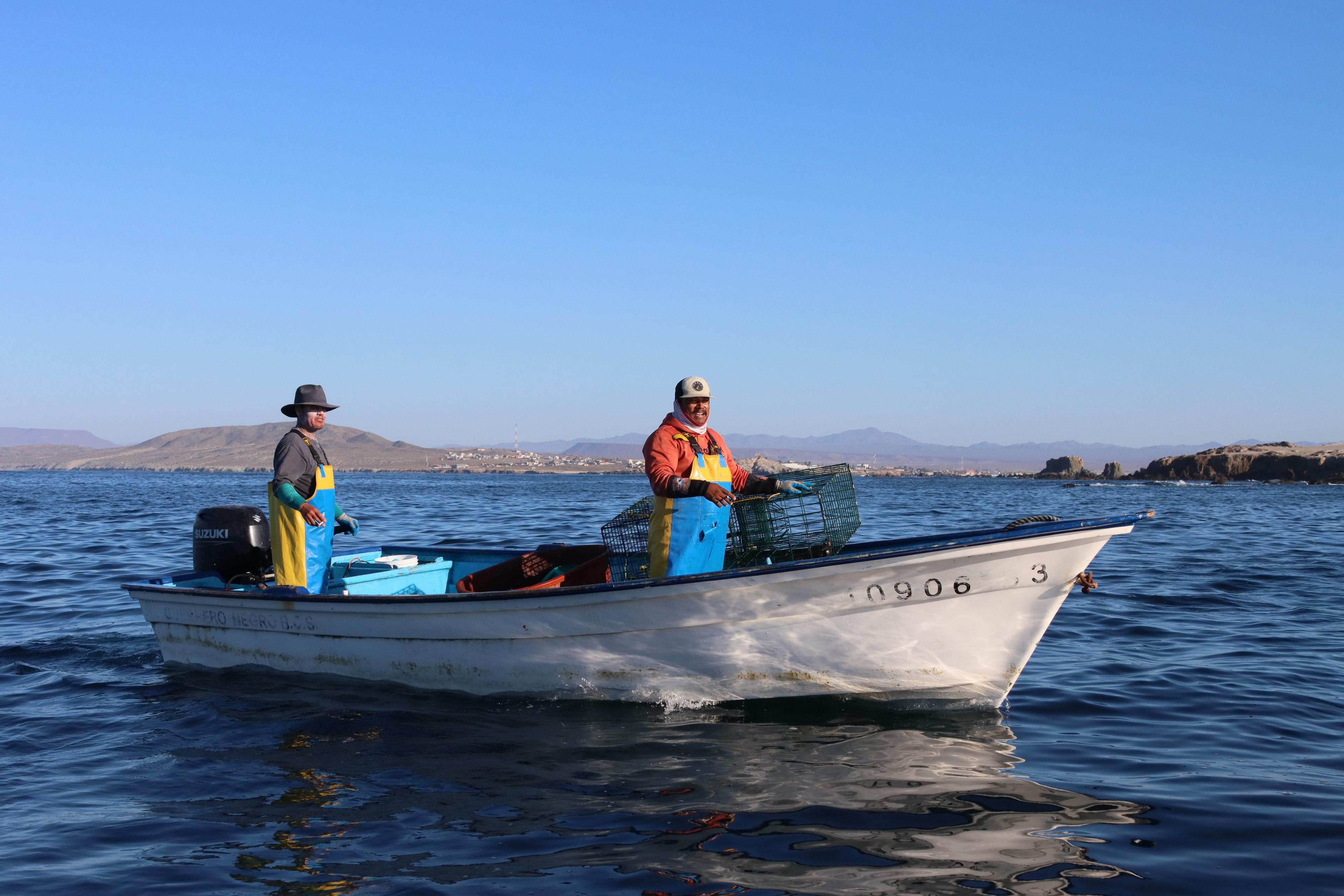Fishermen from Asunción Bay decided to stop fishing this year. In the midst of the economic uncertainty that for them represents suspending important fisheries, they have designated an area of the sea as a marine reserve with the objective of recovering species such as abalone and snails.
The decision not to fish for five years on Asunción Island, located in front of the bay, starting in September of last year was made by fishermen who belong to the California Cooperative Fishery Production Society of San Ignacio. This is not the first time that the community has imposed this type of prohibition.
In the 80s, abalone had a decline in production, so it was agreed to stop the catch and the fishermen noticed a recovery in the following three years. In 2016, something similar happened when it was agreed that San Roque Island, located near the bay, would become a reserve.
“(This time) all we are contemplating is recreational diving, but without the extraction of any snails, any abalone, no sargassum, no fish. Zero commercial fishing,” explains Román López Ramírez, who has been the main driver of the marine reserve on Asunción Island.
Román has been part of the cooperative for 28 years. It began at the fish product processing plant and later joined the Supervisory Board. It was at that time that a cousin of his who lives in Isla Natividad, a fishing community located further north, told him about the marine reserves that had been implemented since 2006 in that region.
Although the suspension on Isla Asunción has already begun, the fishermen know that there are still other challenges ahead so that their objective can be achieved.
Fisherman in lobster season in Asunción Bay. Photo: Patricia Ramírez
Fisherman in lobster season in Asunción Bay. Photo: Patricia Ramírez
Asunción Island seen from the bay. Photo: Patricia Ramírez
Without fishing
The loss of species such as abalone has been common since the late 90s in communities in Baja California Sur, bordering the North Pacific. The causes range from overexploitation to changes in the sea due to climatic effects. This is why there are more and more frequent fishing societies that decide to suspend the catch to help the recovery of fish stocks.
In the case of Bahía Asunción, Román recalls that while almost 30 tons of abalone could still be caught in 2013, the following seasons only reached an average of 15 tons. Production has continued to plummet since that year.
“I feel that it has been complicated, but what has come to strengthen (the decision) is that thanks to relationships (with other cooperatives), support and training, that seed is left and people are understanding, so when it comes to making proposals for this type of issue, the majority ends up supporting,” Román explains when asked about the fishermen's process of leaving the catch.
For his part, Jesús Romero, current president of the Supervisory Board in the cooperative, adds that one of the problems of concern is the economic one. The same one that arrested some to accept the marine reserve. Still, he trusts that the area will remain unfished. “What we're seeing is that they don't enter the reserve because that would bring us problems,” he says.
To deal with financial problems, this year the fishermen agreed that lobster would be fished throughout the area, including the Isla Asunción reserve. This is a commercial-value fishery, so they expect it to bring profits that will help offset the loss.
Another measure that has been taken is training with the Autonomous University of Baja California to maintain underwater monitoring that allows them to measure the results. So far, 17 members of the cooperative have been certified. This group belongs to a Conservation Commission that was created within the cooperative to monitor the Isla Asunción marine reserve.
Román has planned that there will be meetings with authorities such as those in charge of the El Vizcaíno Biosphere Reserve in order to formalize the establishment of the free fishing zone, since for the time being it has only been a voluntary decision without documents. As with state government officials.
The plan also includes maintaining recreational diving, since Asunción Island is a habitat for sea lions and seals. Therefore, it is considered an attraction as a leisure activity.
Sea lions in the waters of Asunción Bay. Photo: Patricia Ramírez
Fishermen in lobster season. Photo: Patricia Ramírez
Fishermen in lobster season. Photo: Patricia Ramírez
Less than a year after the creation of the marine reserve, Román hopes that it will not be an initiative that only remains in this region.
“The idea is that when we open it, it will be with a different awareness, with a different mentality, of being able to create rotating (non-fishing) areas and spaces within the same island. To be able to do things with a different mentality for the benefit of the fishery. The sea gave us a lot. Now we need to help him,” Román says.
For him, the best option for now is not to fish. However, it does not rule out that in the future other alternatives may emerge that will help improve the populations of species such as abalone or snails.




Comentarios (0)